Who are current the top smart home brands?
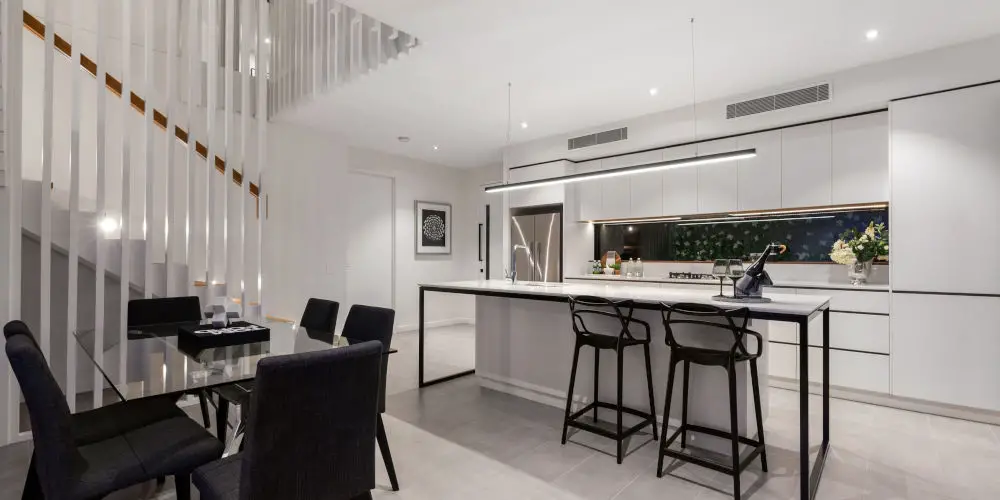
Part of the fun of automating your home is discovering new devices from the world’s top smart home brands. And thankfully, plenty of manufacturers exist, from the mad inventor types to global corporates. But knowing who are best smart home brands can be confusing.
Don’t worry. We’re here to help!
By 2025, Statista predicts that the home automation market will be worth $195.2 billion. This figure is up significantly from the $39.82 billion recorded in 2017.
More homeowners than ever before are adopting smart technology into their homes and lives. It could be as simple as using Alexa for daily reminders or having Crestron automate your entire home with full remote control.
In the last few years of running the UK’s top smart home blog, plenty of smart home brands have come and gone. Many had great products, but the market wasn’t quite ready. Other had a cool brand but didn’t solve a problem people wanted to pay for.
The picture can be confusing, particularly if you’re just at the start of your home automation journey. Which manufacturers can you trust? Should you avoid others? And who are the top smart home brands?
Come with us as we explore the brands you can trust when automating your home and how they can help make life that little bit easier.
Fibaro smart home system
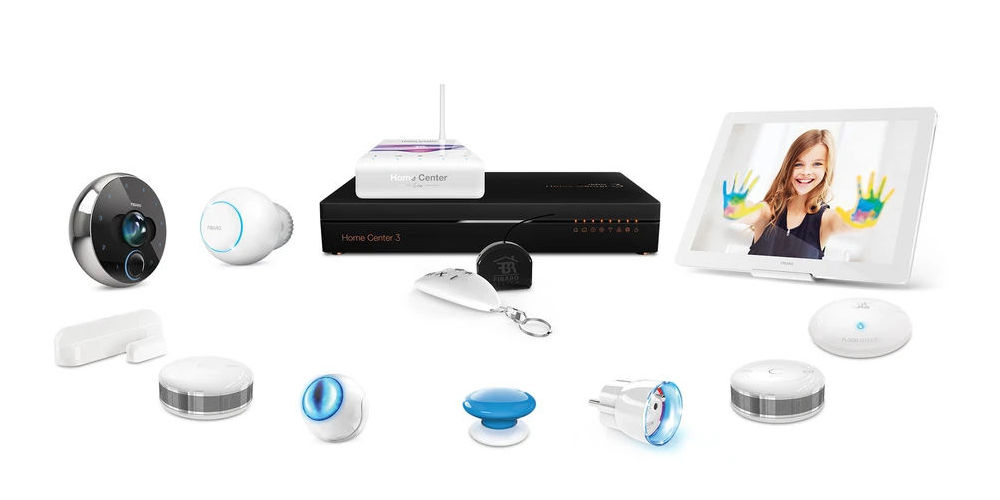
photo by Fibaro
Launched in 2010 and headquartered in Poznan, Poland, Fibaro is widely considered one of the most advanced wireless smart home systems, and the cost of Fibaro is very affordable.
Devices use the Z-Wave protocol, allowing them compatibility with thousands of 3rd party devices. Many devices are compatible with the Apple HomeKit protocol, offering even more options to automate your home.
As one of the top smart home brands, Fibaro offers a good mix of retrofittable and plug-in and play products, allowing you to add the technology to your home without creating an eyesore.
Control every aspect of your home with Fibaro. You can control your system from anywhere with Wi-Fi. As voice control has become popular, Fibaro also works with Google Assistant and Amazon Alexa.
As a Z-Wave compatible system, if Fibaro doesn’t offer a particular product, you can always use a device from a 3rd party brand. With over 2000 Z-Wave compatible products currently on the market, you should be able to find a device to complete the task!
What would we use Fibaro for?
If you’re looking for a home automation system you can design, install, and configure at your own pace that excellently covers the basics, Fibaro is a superb choice. They also have a fantastic network of dealers and installers, that can help turn your dreams into a fully functioning system.
It’s highly scalable, thanks to how the Z-Wave protocol works and the range of hubs. You could start with the Home Center 3 Lite, which can control up to 40 devices and upgrade a few years later to the Home Center 2 or 3. Both can control hundreds of devices.
Any situations we’d avoid using Fibaro?
There are a few situations we would recommend other options. Many homeowners want someone else to design, install, and configure their home automation system. The idea of doing DIY is enough to make them feel faint, let alone actually doing it!
If you have the budget, working with a dealer/installer can result in a better system as they’ll use their knowledge and experience. They’ll test your smart home system before handing it off. So you don’t have to find faults or solutions.
Fibaro handles the basics with ease. But there are limited Audio/Video options, so you can’t do multi-room audio or route AV to different TVs in the home.
Crestron home automation
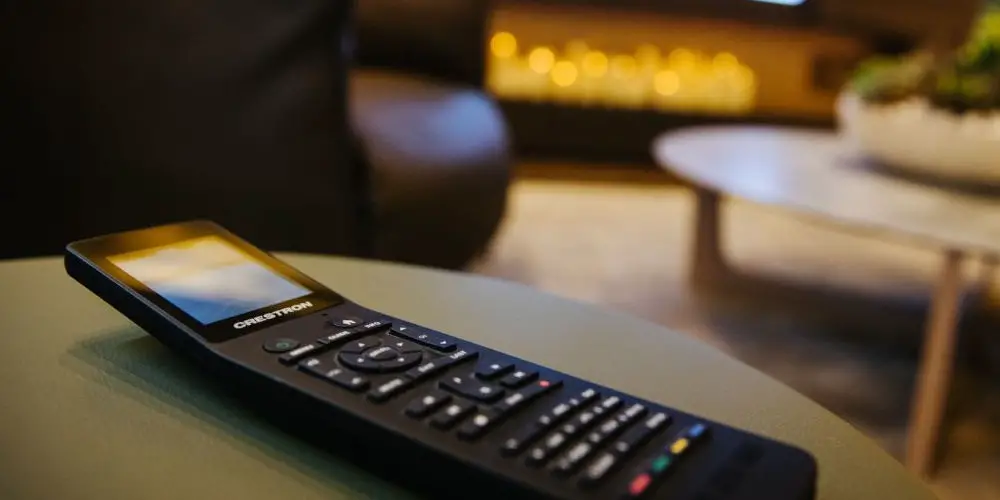
photo by Crestron
Founded in 1971 by inventor and engineer George Feldstein, Crestron Electronics is one of the oldest home automation companies in the world. Based in New Jersey, USA, the company designs, manufactures, and distributes smart home and audiovisual equipment.
Much like other high-end home automation systems, you can’t buy products directly from Crestron. Instead, they use a global network of dealers to design, install and configure automation systems.
There are many uses for Crestron home automation products, with luxury homes only being a small part of their business. They also supply the US government, Microsoft, hotels, hospitals, and schools.
Crestron provides complete control of every element, both within the home and office. Easily operate lights, heating, gates, TVs, and a home cinema room, both in person and remotely using Wi-Fi.
Using a wired network, Crestron requires your home to be rewired. At the heart of the system is rack-mounted modules that control the system, and devices are wired into these. Some controllers are battery-powered, wireless units.
Most homeowners spend £75,000 plus when adding a Crestron system. So, it’s hardly a system you would install on a whim or try to DIY. As you need to work with a dealer, it takes time to design, install, and configure a system. You can’t get up and running overnight.
What would we use Crestron for?
As a system developed for commercial applications, using Crestron in a residential situation means there’s plenty of unused capacity. Unlike Fibaro, Crestron is all singing, all dancing. You can integrate a complex AV set up into the system, control lights, heating, blinds, and more.
It’s not a DIY system. So you need to work with a dealer to design, install, and configure your system. This is both a positive and a negative, as you need a sizeable budget. However, someone else will do the heavy lifting and fault-finding before handing back the keys.
Any situations we’d avoid using Crestron?
If you don’t need complex AV options or just want a simple, smart home system, Crestron probably isn’t your best option. It will take a few weeks/months for your dealer to hand back the keys, unlike a DIY system where you can typically install them in a day or two.
As with other top smart home brands, these types of home automation systems aren’t cheap and often require a lot of rewiring for them to work. So, a large chunk of the budget will go on labour.
You can’t buy Crestron devices for yourself. So, you have to use a dealer who can charge a high amount. And while there’s nothing wrong with that, you are fighting with one hand tied behind your back.
Control4 home automation
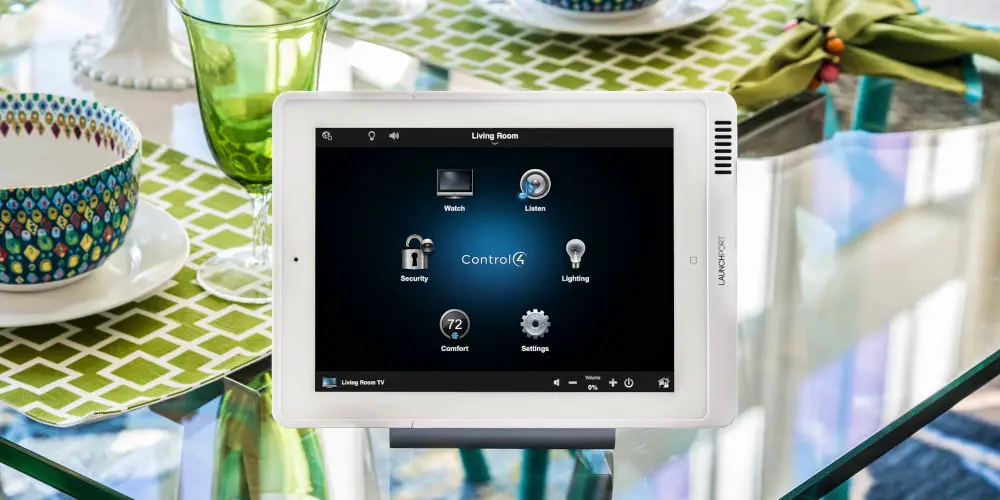
photo by Control4
Since launching in 2004, Control4 has established itself as a leading provider of home automation systems for both homes and businesses. Based in Salt Lake City, USA, the company operates through a global network of nearly 6,000 authorized dealers.
Each system is unique as it’s built around the client and their requirements. Control4 can help automate and control connected devices. You can use the system to control features such as lighting, audio, video, climate control, intercom, and security.
As a predominantly wired system, your home might need rewiring. Devices are wired into rack-mounted modules that control the system. However, the majority of the controllers are wireless and battery-powered.
To buy a Control4 system, you have to use one of their approved dealers as products aren’t available directly to consumers. The dealer will install and configure the system, creating a bespoke smart home.
In addition to a superb range of products, the Control4 operating system works with tens of thousands of third-party products. Over the years, they have cemented their place as a market leader by acquiring several companies such as Pakedge, Triad, Neeo, and others.
Around 475,00 homes worldwide use a Control4 system with more than 15 million connected devices.
The average system costs £50,000. So, it’s hardly a system you would install on a whim or give it go yourself. Nor should you expect your system to be installed and working overnight.
What would we use Control4 for?
Much like Crestron, Control4 offers a wide range of options for building a home automation system. It’s a complex system that has to be dealer installed.
So, if you’re looking for a more affordable option than Crestron that you can hand your keys to and return a few weeks later to a smart home, Control4 might be a good option.
It can handle the basics, including heating, lights, blinds, home entertainment, and more. But it also can control complex systems such as multi-room audio, cinema rooms, and more.
Any situations we’d avoid using Control4?
If you want a simple, smart home system or don’t need complex AV options, Control4 probably isn’t your best option. It’s not a system that’s cheap or quick to install. Your dealer might need to lay a lot of wires to get the system and devices to work.
As one of the top smart home brands, you can only purchase Control4 devices via a dealer. So you’ll always be at their mercy. Plus, keeping your system up to date can also be costly.
Amazon Echo devices and Alexa
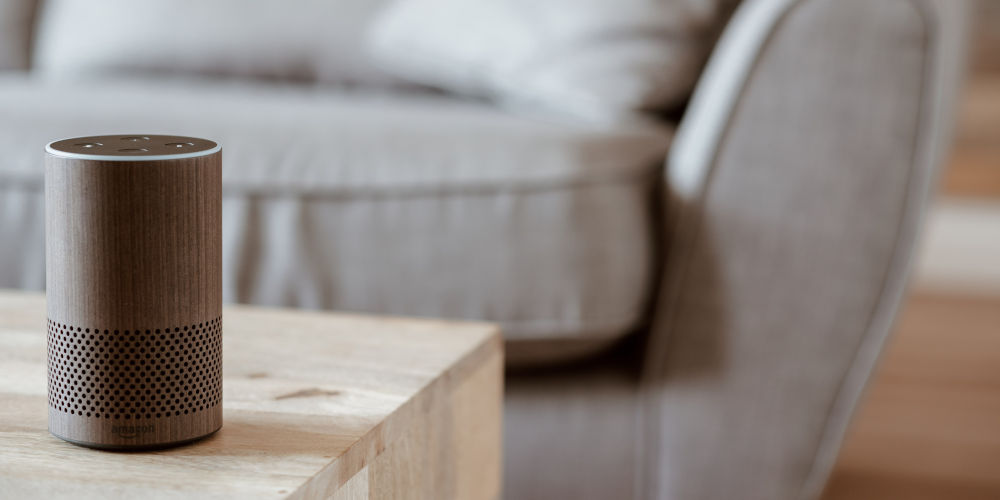
As one of the big three voice controllers, Amazon with its Alexa AI has changed how we use home automation. You no longer need to find a remote or phone, as you can ask Alexa, and it’ll take care of it.
Alexa does offer basic smart control over devices. However, it’s not as good as Control4 or Fibaro, or other options as the system uses Wi-Fi, which slows down the more devices attached to the network.
Voice control options like Alexa won’t replace the need for apps but does make life easier as you can action simple commands in seconds. Alexa can help you turn on/off devices, adjust scenes, and even help you stay on top of life!
What would we use Amazon Echo and Alexa devices for?
Alexa is great for actioning simple voice commands, such as turn on dining room lights or lower bedroom blinds. And the technology works with most smart home systems.
Having an Echo Dot or Echo Show device in your home means you can talk to it, rather than having to look for your phone or another controller. Plus, Alexa has a ton of other features, including playing music, setting reminders, and creating shopping lists.
Any situations we’d avoid using Echo devices or Alexa?
While you can control some smart home devices from your Echo device, the system uses Wi-Fi. Running too many Wi-Fi devices at once will impact your internet speed.
Alexa is superb for simple voice commands, but you can’t build or edit complex automation sequences. It’s best to see Alexa as another tool in the toolbox and not the device that will replace all other control options.
There are privacy concerns with Alexa as it’s always listening for its wake word. So you’ll want to bear that in mind.
Google Assistant and Nest devices
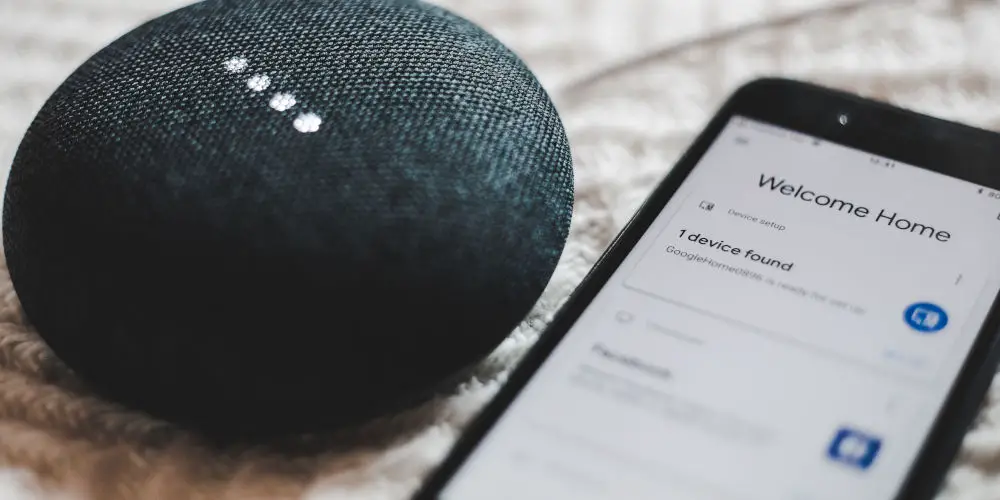
Another of our top smart home brands is Google. Like Alexa, the Google Assistant is a voice control that allows you to turn devices on/off, change scenes, and more simply by asking. The technology is built into millions of devices and the Android OS.
Google also offers a range of smart home products, including the Chromecast, Nest speakers, and the Nest smart thermostats. Again the system is Wi-Fi based and so best used for voice controls rather than automating your home.
Not sure whether Alexa or Google Assistant is better? Start with our comparison.
What would we use the Google Assistant or Nest devices for?
With the Google Nest range, you can automate the basics. Add the Google Assistant and the Google Home app into the mix, and you have a pretty flexible system. So you might find you can automate your home using only Nest devices.
Google’s Assistant is superb at reacting to simple voice commands, such as turn on dining room lights or lower bedroom blinds. And the technology works with most smart home systems.
As the Nest speaker range has the Google Assistant built-in, you don’t need your phone to control devices. Great if you’ve already got your hands full!
Any situations we’d avoid using Google Assistant or Nest devices?
Nest devices use Wi-Fi to communicate with each other. Running too many Wi-Fi devices at once will impact your internet speed.
The Google Assistant is superb for simple voice commands, but you can’t build or edit complex automation sequences. Like Alexa, see this technology as another tool in the toolbox. Your Nest device won’t replace all other control options.
As the Assistant is always listening for its wake word, there are some privacy concerns that are worth considering by you use it.
Sonos smart speakers
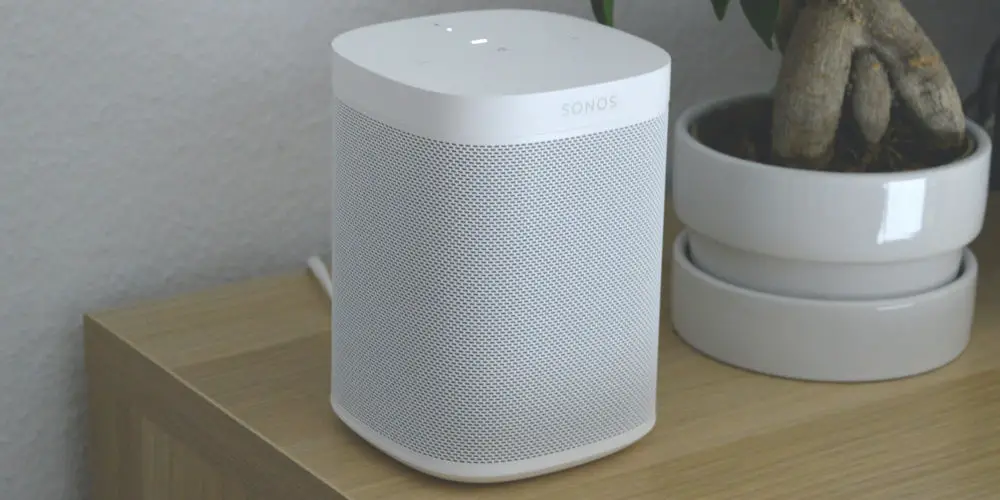
Offering a far superior audio experience, Sonos smart speakers faithfully reproduce audio, making them one of the top smart home brands available. They don’t offer a hundred different functions as typical of smart speakers.
They produce a crisp and clear sound, complete with a full dynamic range, even at low volumes. You no longer have to listen to tinny-sounding music that is lifeless and flat.
Historically installing a multi-room audio system was expensive and invasive. Sonos is a wireless option that makes adding audio to several rooms easy. You don’t need to run cables or buy speakers and amps as Sonos units combine these with wireless capabilities.
Plus with a range of indoor and outdoor speakers, including a soundbar and subwoofer, adding Sonos to multiple rooms in your home is quick and painless.
Easy to operate, you can enjoy your favourite streaming service and play music with a couple of taps on the app. Plus, linking multiple units within your home is just as simple.
What would we use Sonos speakers for?
If you want to quickly add multi-room audio to your home, Sonos is by far the best option. It takes a few minutes to get a speaker set up and running, allowing you to play music in your home.
Like Fibaro, Sonos scales really well. You can start with a single speaker, and over time build up to a system with multiple speaker options. As one of the top smart home brands, many manufacturers offer devices that seamlessly integrate with Sonos devices.
Any situations we’d avoid using Sonos devices?
While they’re attractive devices, some prefer wall-mounted or in-celling speakers as they’re far more discrete. If you need a lot of volume, Sonos might not be the best option as you can’t easily upgrade their internal amp, meaning you’d need to buy a completely different device.
Sonos are great speakers when they work. However, they can be a nightmare to fix if they go wrong. In some cases, it’s easier to buy a new unit rather than going through the hassle of trying to fix one.
Lutron
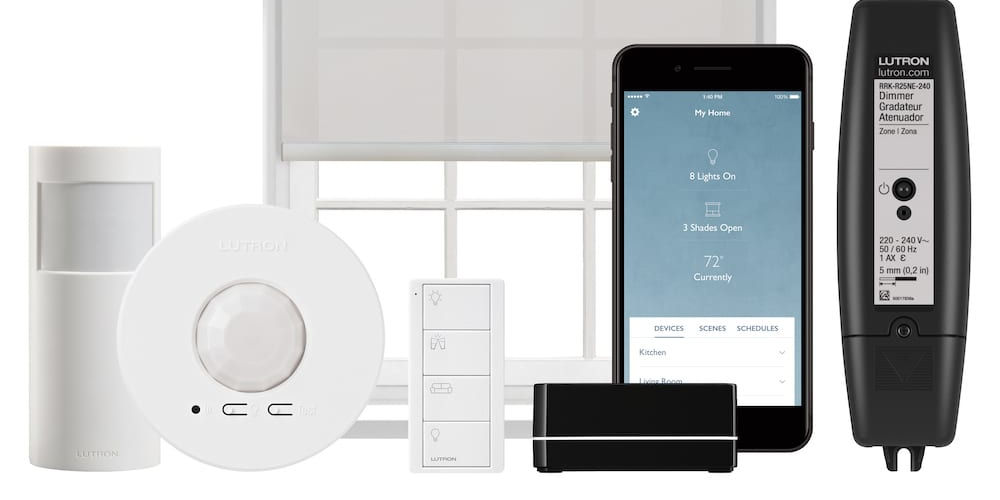
photo by Lutron
You can’t talk about top smart home brands without mentioning Lutron. Joel Spira, the founder, invented a better lighting dimmer in 1959. Today, the company is known for pioneering lighting control solutions and window treatments.
Lutron has revolutionised how we experience the modern smart home. They create beautiful lighting scenes that also reduce home energy usage. Their collection of window treatments coupled with silent motors are also revolutionary, with many lasting over 30 years.
Lutron products work with Control4, Crestron, and other automation systems and also as a stand-alone system.
What would we use Lutron devices for?
Lutron is known for two things: Blinds and Lighting. So, if you want superior blinds or lighting in your home, they are the brand many choose.
You can use their products and devices as stand-alone systems or integrate them with other top smart home brands, such as Control4 and Crestron.
Another area where Lutron excels is longevity. Many homeowners are using devices installed 20 plus years ago that still works great. So, while they aren’t cheap, their products last.
Any situations we’d avoid using Lutron devices?
While Lutron offers some entry-level lighting options, such as the Caseta range, much of their range is designed to be installed and configured by a professional. So, you’ll need a decent budget and the time to work with a dealer to find the best option for your home.
Compared to other top smart home brands, what Lutron offers is quite limited. Of course, some will see this as a positive, others as a negative.
The top smart home brands!
Having looked at some of the top smart home brands currently available, you now have a much better idea of who to trust. You should research all of the brands we’ve mentioned and go visit their showrooms or a retailer, if possible.
If you’re serious about your home automation system, you should work with like minded brands, dealers, and suppliers. Hopefully, this list gives you a good starting point.




